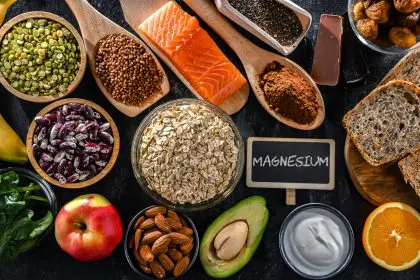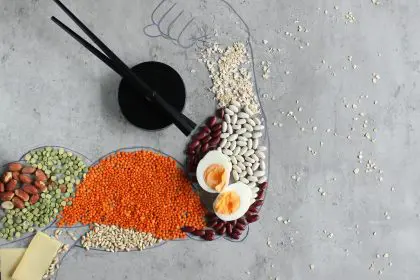Hypertension affects nearly half of American adults, often developing silently until it leads to serious health complications. While medication remains a cornerstone of treatment for many, growing evidence suggests that natural approaches can make a significant difference in managing blood pressure levels. From dietary adjustments to stress management techniques, these natural methods offer practical options for those looking to reduce their reliance on pharmaceuticals or enhance the effectiveness of their current treatment plan.
Understanding blood pressure basics
Blood pressure readings consist of two numbers that represent the force blood exerts against artery walls. The first number measures systolic pressure (when the heart beats), while the second records diastolic pressure (when the heart rests between beats). A normal reading falls below 120/80 mm Hg, with hypertension diagnosed when readings consistently reach 130/80 mm Hg or higher.
The relationship between heat and blood pressure adds another dimension to management strategies. When temperatures rise, blood vessels naturally dilate to help the body cool down. This dilation can temporarily lower blood pressure readings, creating a seasonal variation that sometimes leads people to assume their hypertension has improved when it may simply be responding to environmental factors.
For those managing hypertension, understanding this relationship becomes particularly important during summer months or in warmer climates. The body’s natural response to heat can sometimes interact with blood pressure medications, potentially leading to excessive drops in blood pressure that cause dizziness or lightheadedness.
The DASH diet difference
The first proven natural approach involves dietary changes, with the DASH (Dietary Approaches to Stop Hypertension) diet showing consistent results in clinical studies. This eating pattern emphasizes fruits, vegetables, whole grains, lean proteins, and low-fat dairy while limiting sodium, saturated fats, and added sugars.
What makes the DASH diet particularly effective is its focus on potassium, magnesium, and calcium – minerals that help regulate blood pressure. A typical DASH meal plan includes 8-10 servings of fruits and vegetables daily, providing natural sources of these beneficial minerals. Dark leafy greens like spinach and kale deliver magnesium, while bananas, sweet potatoes, and avocados offer potassium. Dairy products or fortified plant-based alternatives provide calcium.
The sodium reduction component proves especially important, with research showing that limiting intake to 1,500-2,300 mg daily can lower systolic blood pressure by several points. This translates to roughly one teaspoon of salt per day from all food sources combined. Restaurant meals and processed foods typically contain the highest sodium levels, often accounting for over 70% of sodium intake for the average American.
During warmer months, the DASH approach naturally aligns with seasonal eating patterns as summer produce markets overflow with fresh fruits and vegetables. Light, hydrating foods like watermelon, cucumber, and berries not only support blood pressure management but also help maintain hydration when heat increases fluid needs.
Mindful movement matters
The second natural approach focuses on physical activity, with consistent evidence showing that regular exercise can lower systolic blood pressure by an average of 5-8 mm Hg. The American Heart Association recommends at least 150 minutes of moderate-intensity activity weekly, which can be broken down into 30-minute sessions five days a week.
Walking stands out as particularly beneficial for blood pressure management. A 2023 study published in JAMA Internal Medicine found that taking 8,000-10,000 steps daily correlated with reduced hypertension risk. Walking requires no special equipment, can be adjusted to various fitness levels, and allows for social connection when done with friends or walking groups.
Water-based exercises offer another excellent option, especially during hot weather when traditional outdoor activities might pose heat stress risks. Swimming, water walking, and aqua aerobics provide cardiovascular benefits while keeping the body cool. The water pressure also creates a natural compression effect that may temporarily reduce swelling and improve circulation.
For those new to exercise or managing multiple health conditions, starting slowly proves essential. Even short 10-minute sessions accumulated throughout the day show benefits for blood pressure. Consistency ultimately matters more than intensity, particularly in the early stages of adopting an active lifestyle.
Timing workouts to avoid peak heat hours becomes crucial during summer months. Early morning or evening sessions minimize heat stress while still delivering blood pressure benefits. Indoor alternatives like mall walking provide climate-controlled options when outdoor temperatures soar.
Stress reduction strategies
The third natural approach targets stress management, addressing the often-overlooked connection between psychological well-being and blood pressure. When stress triggers the fight-or-flight response, the body releases hormones that temporarily raise blood pressure by increasing heart rate and constricting blood vessels.
Chronic stress keeps these hormones elevated, potentially contributing to sustained hypertension over time. Research published in the Journal of the American Heart Association found that those reporting high stress levels faced a 21% higher risk of developing hypertension compared to those with better stress management.
Mindfulness meditation stands out among stress-reduction techniques for its accessibility and research support. The practice involves focused attention on breathing while acknowledging and releasing intrusive thoughts without judgment. Even short sessions of 5-10 minutes can activate the parasympathetic nervous system, counteracting stress responses and potentially lowering blood pressure.
Deep breathing exercises offer another practical approach, particularly valuable during heat waves when physical discomfort might heighten stress. The 4-7-8 technique—inhaling for four counts, holding for seven, and exhaling for eight—helps slow heart rate and induce calm. This portable stress management tool requires no special equipment and can be practiced anywhere.
Progressive muscle relaxation focuses on tensing and then releasing different muscle groups sequentially, creating awareness of physical tension patterns that often accompany stress. When practiced regularly, this technique helps identify early signs of stress response and intervene before blood pressure rises significantly.
Sleep quality connections
The fourth natural approach highlights sleep quality, an often-overlooked factor in blood pressure regulation. During normal sleep, blood pressure naturally dips by 10-20%, giving the cardiovascular system essential recovery time. When sleep quality suffers, this “nocturnal dipping” diminishes, potentially contributing to hypertension over time.
Research from the University of Arizona found that adults sleeping less than six hours nightly faced a 20% higher risk of developing hypertension compared to those getting seven to eight hours. Beyond duration, consistency matters—maintaining regular sleep and wake times helps regulate circadian rhythms that influence blood pressure patterns.
Summer heat often disrupts sleep quality, creating a potential indirect impact on blood pressure management. Cooler sleeping environments (around 65-68°F) promote deeper sleep by supporting the body’s natural temperature drop during rest. Using fans, cooling mattress pads, or air conditioning can create more sleep-friendly conditions during hot weather.
Establishing a consistent pre-sleep routine signals the body to prepare for rest. Digital device use before bedtime deserves particular attention, as blue light exposure can suppress melatonin production and disrupt sleep-wake cycles. Sleep experts recommend disconnecting from screens at least one hour before bedtime.
For those experiencing sleep apnea—a condition strongly linked to resistant hypertension—screening and treatment can significantly improve both sleep quality and blood pressure control. The characteristic pauses in breathing during sleep repeatedly trigger stress responses that elevate blood pressure and prevent the normal nocturnal dipping pattern.
Herbal approaches with promise
The fifth natural approach explores herbal supplements and food compounds showing promise for blood pressure management. While less established than lifestyle modifications, certain plant-based options have garnered scientific interest for their potential cardiovascular benefits.
Hibiscus tea stands out for its consistent research support. A review published in the Journal of Hypertension analyzed five studies and found that hibiscus tea consumption lowered systolic blood pressure by an average of 7.6 mm Hg and diastolic by 3.5 mm Hg. The proposed mechanism involves ACE-inhibiting compounds similar to certain blood pressure medications, though at lower potency.
This herbal option offers particular appeal during hot weather as it can be brewed and chilled for a refreshing, hydrating beverage that supports blood pressure management. The tart flavor profile makes it a satisfying alternative to sugary drinks that might otherwise undermine heart health efforts.
Beetroot juice provides another plant-based option with research backing. Its high nitrate content converts to nitric oxide in the body, helping blood vessels dilate and potentially lowering blood pressure. A 2018 meta-analysis in the Journal of Nutrition found that beetroot juice supplementation reduced systolic blood pressure by an average of 3.5 mm Hg—a modest but meaningful improvement.
For those interested in supplement forms, aged garlic extract has shown promising results in several studies. Research published in Experimental and Therapeutic Medicine found that participants taking aged garlic extract for 12 weeks experienced average reductions of 10 mm Hg systolic and 5 mm Hg diastolic compared to placebo groups.
While these natural compounds offer interesting complementary approaches, they should never replace prescribed medications without medical supervision. Additionally, potential interactions with existing medications require careful consideration, making healthcare provider consultation essential before starting any supplement regimen.
Integrated approaches yield best results
The most successful natural hypertension management typically combines multiple approaches rather than relying on single interventions. A 2022 systematic review in the British Medical Journal found that participants implementing comprehensive lifestyle modifications—combining dietary changes, exercise, stress management, and sleep improvement—achieved average blood pressure reductions of 11/5 mm Hg, significantly outperforming single-strategy approaches.
This integrated strategy reflects growing recognition that hypertension stems from multiple interacting factors rather than isolated causes. By addressing several contributors simultaneously, natural approaches create synergistic effects that enhance overall cardiovascular health while specifically targeting blood pressure regulation.
The seasonal nature of some management strategies highlights the importance of adaptable approaches. During summer months, emphasizing hydrating foods, heat-appropriate exercise timing, and cooling sleep environments addresses both direct and indirect factors affecting blood pressure control.
For most individuals with hypertension, natural approaches work best as complementary strategies alongside appropriate medical care rather than complete replacements. Regular monitoring, whether through home blood pressure devices or clinical visits, provides essential feedback on how these natural methods affect individual readings and whether medication adjustments might be warranted under medical supervision.
The journey toward managing hypertension naturally requires patience and consistency. Benefits typically develop gradually rather than immediately, with some interventions taking weeks to demonstrate measurable effects. This timeline contrasts with pharmaceutical approaches that often show rapid results but may come with side effects that natural methods typically avoid.
By embracing evidence-based natural approaches while maintaining appropriate medical oversight, those affected by hypertension can often achieve better control with fewer medications, moving toward a more holistic blood pressure management strategy that supports overall cardiovascular health for the long term.














